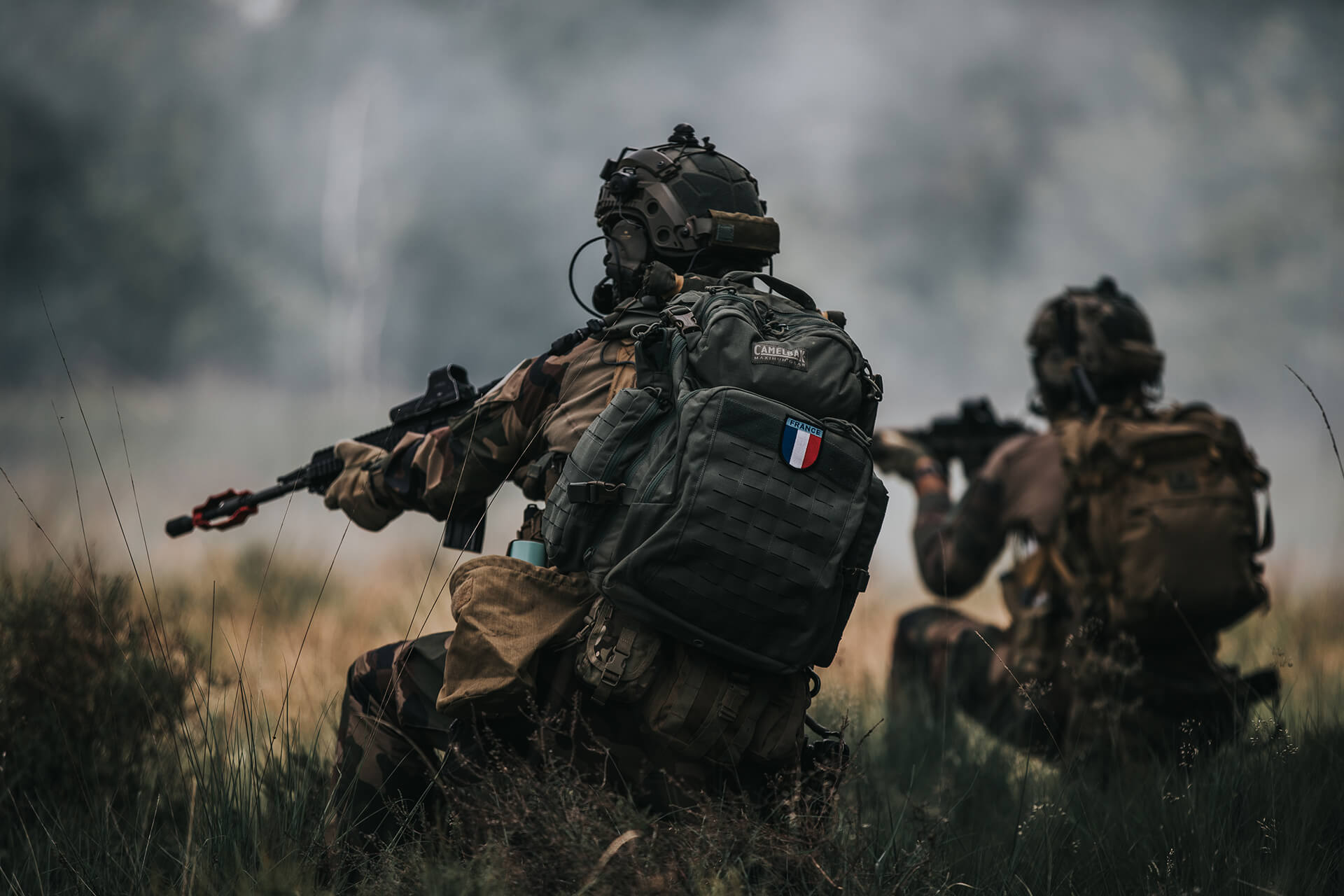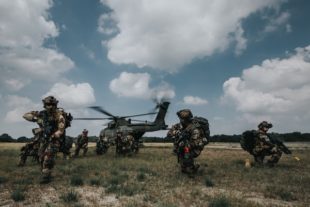
Air Centric Personnel Recovery Operatives Course
APROC
Course aim
At the end of the course
- Crews that have little or no experience will have learnt how to plan and conduct multinational, multi-ship, dissimilar type aircraft missions based on a JPR scenario, recovering both “trained” or “untrained” military personnel as well as civilians.
- Experienced pilots will have been able to act as Rescue Mission Commander (RMC) through learning to lead the planning and execution of complex missions and brief, and de-brief the mission to the task-force and commander.
- Extraction Forces (EFs) leadership will have fully participated in the planning of complex missions based on a PR scenario.
A secondary aim of the course is to provide a JPR training opportunity for:
- Airborne Early Warning (AEW) crews to become proficient as Airborne Mission Coordinator (AMC);
- Rescue Escort (RESCORT) crews to act as proficient On Scene Commander (OSC);
- EFs to apply standards to recover ISOPs and provide medical care to them as required.
The use of a PR scenario allows for the maximum integration of fixed- and rotary wing assets and extraction forces in a coherent way using PR procedures. It especially enables students to work with assets that would not realistically be available in any other type scenario.
Their exposure to standardised combined and joint procedures during the course will enable them to participate in live training, exercises and operations conducting recovery missions.


General considerations
The course focuses on planning and execution
The main aim of the APROC is to become familiar with the principles and processes of planning recovery missions.
The practical execution provides feedback to the conducted planning. It also exposes all different participants to situations that were not planned for or have changed and thus require improvisation.
The course focuses on aerial assets for recovery
Although there are various methods and tools available to recover ISOPs, the APROC focuses on the use of aerial assets (helicopters) for the recovery.
Land, maritime and Special Operations Forces (SOF) recoveries may be better suited in certain situation, but the planning process for those recovery missions is quite different compared to aerial recoveries.
There is also limited if any synergy between these different planning processes. This makes course management more difficult, requiring more staff. Should there be a sufficient interest and requirements for “non-air” recoveries, a separate course has to be developed.
The course is a “day only” course
The aim of the APROC is to become familiar with the principles and processes of planning and executing recovery missions. The procedures for day missions are the same as for night missions.
In addition, night missions are much more prone to cancellation due to national restrictions and weather conditions. Therefore, the course will be conducted using day missions only.
Typical, fictitious scenario
The APROC will be based on a fictitious scenario that allows for gradual increase of the complexity of the missions while using a standard Personnel Recovery Task Force (PRTF) composition.
The scenario may not be continuous throughout the flying phase of the course, but may differ from day to day to facilitate the learning objectives.
The scenario also allows for not only the recovery of “trained and equipped” military personnel (e.g. aircrew), but also allows for the recovery of other military personnel and civilian personnel. This means that the whole spectrum of ISOPs will be covered during the course.
MIMOs will support the task forces during planning
Mission Mentors and monitors (MIMOs) will be present during the whole planning process to support the various players during the planning phase and ensure that safety aspects are properly taken into consideration in order to ensure a safe execution of the mission.
Modular training
As the training audience will be diverse and participants do not have to be fully trained in all aspects of the planning and conduct of recovery missions, the course will address different roles and aspects in separate lectures that will be conducted in parallel.
This allows for better training to smaller focused groups as well as advanced training for those who require that (e.g. RMCs).
Course material
All course material (slides, handouts, orders, etc.) will be provided in English.
Number of task forces
For management and flight safety reasons, the course will have a maximum of four PRTFs during the flying phase.
Task force composition
The course will provide an introduction to working in a standardised, basic PRTF composition that has all the various elements in it, i.e.:
- Two recovery vehicles;
- Two Rotary Wing (RW) RESCORT assets;
- Two FW RESCORT assets;
- One EF.
The two FW RESCORT assets may also act as OSC. The PRTFs should be supported by an AMC. The PRTF composition will be tailored to the mission taking the crawl-walk-run principle into consideration.


